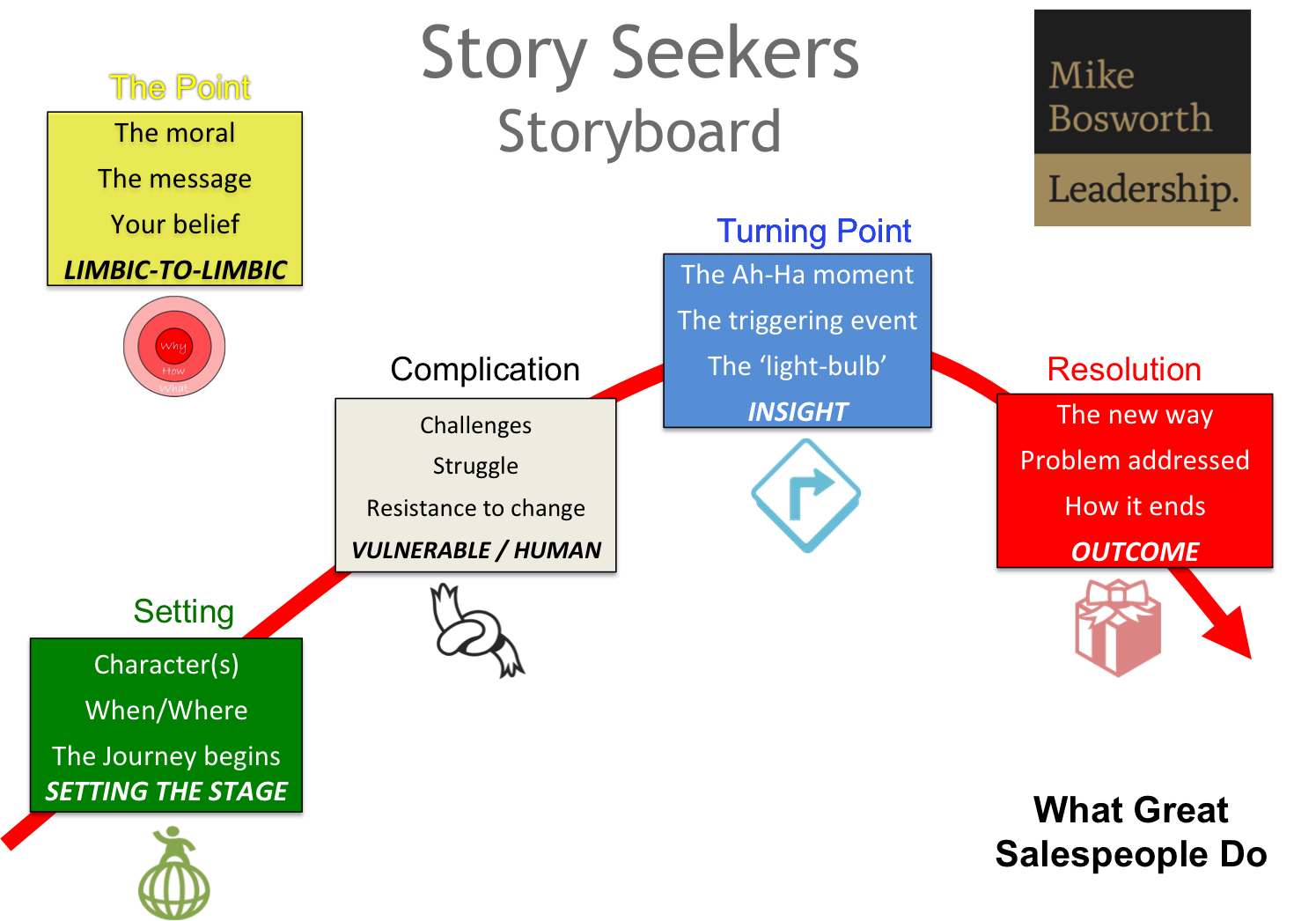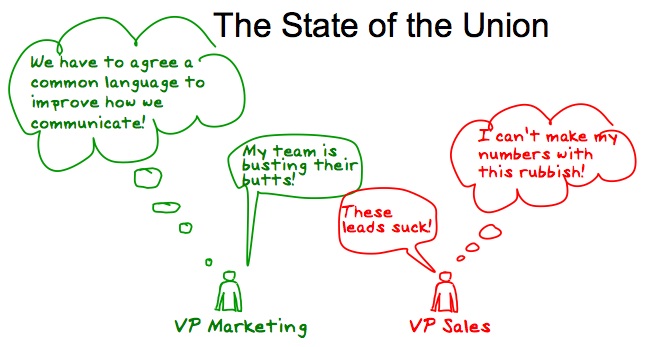Earlier this year I ran a
Sales and Marketing Messaging Alignment workshop for an early stage company in the Bay Area. They are not actually a start-up as they have been in business for a few years, but they are still starting up.
The subject of capturing proof points and formatting them to tell stories came up during the messaging workshop and I want to use a story to illustrate the point of using a storytelling and to describe the discrete steps in the storytelling format. I partner with
Mike Bosworth and use his Story Seekers method in formatting and telling stories. The format is universally understood and follows the basic "hero's journey" format that powers so many of the scripts in our popular film culture.
The people in the company I'm working with are World-class thought leaders in their field, they have a great product for a well-defined niche, but they are struggling.
Their messaging clarity was 3/10 and their website unclear and they got few inbound leads. Like many other emerging technology companies, they were using outbound cold calling and spamming lists to generate interest and not surprisingly had very little success.
An additional problem was that the few leads they got often proved to be unready for sales contact. We (
Kuno Creative and Admarco) were hired to help clarify their messaging and to transform their Website and implement an inbound marketing methodology.
After clearly identifying their capabilities or Win-Themes and applying them to their Buyer Personas in the messaging workshop, I asked a couple of the top salespeople to role-play with me around the buyer persona issues, using the capabilities we had developed.
What happened next is happening in sales teams all over the World and explains why so many salespeople are struggling. They have plenty of success stories or proof points, but they don't have the stories in a usable storytelling form … and salespeople don't have the skills to relate their story.
(The barrier or status quo in the last sentence is the fact that they don't have the stories in a usable form – at their fingertips; the complication is that they don't have storytelling skills - even if they had the stories.)
But let me get back to the story and role-play.
- Their salespeople who know so much about the problem proceeded to tell me what I needed (to use their product), - I immediately felt my personal space being invaded when being told what it was that I needed to do and I felt like I wanted to push the salesperson away. It felt like I was being sold and I pushed back hard and gave them an objection, I felt I was under pressure - like every buyer does. No-one likes being sold... it's offensive. ((Telling is the STATUS-QUO delivery mode and a BARRIER to success for most salespeople))
- The other issue this sales team has is that their market has nuances that are subtle and they cannot be 100% sure they are "on-message" when making a recommendation – because typically they are premature in making it. Salespeople who have seen the problem dozens of times before, often can't wait until they fully understand the buyers story, before suggesting a solution. This is also known as premature elaboration. ((Market nuances are the COMPLICATION))
Now let’s break down the role-play with me telling a story vs. premature elaboration above.
Storytelling Stucture
1. We reversed the roles and I played the role of the salesperson and asked if I could share a story of how we had helped another VP in a similar company (same role) to solve a similar problem. SETTING.
2. I described the status quo - they had Oracle and lot of reporting tools to do the job… but the barrier was that they couldn't see the problem with their existing tools, despite having spent a lot of money on technology and decision support. STATUS QUO/BARRIER - Setting the Stage.
3. I then introduced the complication, which meant that because managers couldn't see the problems in their standard reports, they had to work Sundays to prepare for Monday morning meetings using a data dump and Excel to try and spot the problems. COMPLICATION/Constraint + vulnerable/human… we can relate to the pain of working Sundays.
4. Next I introduced the unique product capability and our insight which helped to identify the problem and show the customer how they could use our tools to see the issues and take action to solve the problems. TURNING POINT.
5. They adopted the solution and now the problems are made visible in reports that we generate automatically from our system and managers get to share Sundays with their families. RESOLUTION.
6. To add concrete evidence, I used the quote about the impact of the software on productivity extracted from a CEO's Quarterly Wall Street briefing = OUTCOME.
This was a watershed moment for my client and the sales team.
Summary
- Stories give us the natural ability connect emotionally with buyers in a non-threatening way and to accelerate trust.
- Stories need tension and emotion/vulnerability to connect emotionally with buyers.
- Stories are boring without emotion and contrast to bring them to life and are quickly forgotten.
- Salespeople need to be prepared to be vulnerable and go first with a story and then to carefully "tend" or listen to the buyer’s story.
- The “Who I’ve Helped Story” starts with the setting and introduces our buyer and the status quo.
- The journey begins with Barriers that describe what's preventing the buyer from achieving their goals.
- Complications/constraints are emotional factors that bring our story to life and give it tension through struggle, resistance to change and ultimately this is the point of human connection.
- The turning point is the insight we bring with our expertise and the use of our software to help the buyer see the problem in a new light.
- The resolution is the successful outcome and if possible, some hard ROI evidence
- Stories are the most powerful connective link between salespeople and buyers to convey insight in a way that buyers want to receive it. Just about everything else can be gotten from the Website.
Conclusion and Calls to Action
Storytelling is not yet mainstream and too "touchy-feely" for most mainstream sales leaders. Individual salespeople and early adopter sales leaders looking for competitive advantage in how they sell could start their journey by;
i.
Aligning sales and marketing messaging to clarify their value proposition,
ii. Capturing and formatting their "Who I've Helped Stories" in the above manner,
and placing them in the hands of salespeople when they need them.
iii.
Training sales people in storytelling.






